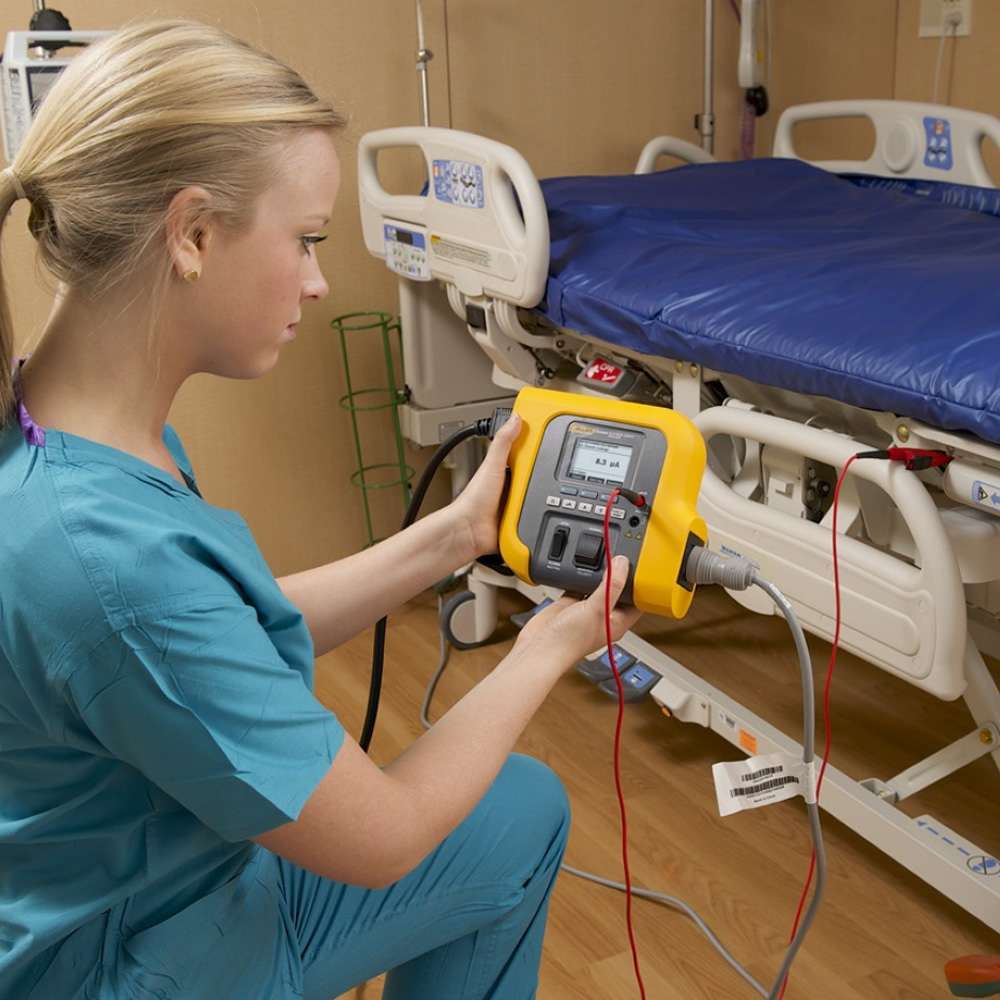In the bustling environment of healthcare facilities, amidst the whirlwind of patient care and medical procedures, there’s a silent but crucial process that ensures everything runs smoothly: safety tester calibration. This behind-the-scenes activity may not always be in the spotlight, but its significance cannot be overlooked. Let’s dive into why safety tester calibration matters and how it contributes to the safety and reliability of medical equipment.

Understanding Safety Tester Calibration
Safety testers are vital instruments used to verify the electrical safety and functionality of medical devices. They assess whether equipment complies with safety standards and regulations to ensure patient and staff safety. However, like any precision instrument, safety testers require periodic calibration to maintain accuracy and reliability.
Ensuring Precision and Accuracy
Calibration is the process of adjusting and verifying the accuracy of a safety tester’s measurements. Over time, factors such as component aging, environmental conditions, and usage can cause drift in measurement accuracy. Without regular calibration, safety testers may provide inaccurate results, leading to potential risks for patients and healthcare professionals.
By calibrating safety testers regularly, healthcare facilities can ensure that the measurements they provide are precise and reliable. This precision is essential for identifying potential electrical hazards in medical equipment and preventing accidents or malfunctions that could harm patients or staff.
Compliance with Standards and Regulations
In the healthcare industry, adherence to safety standards and regulations is paramount. Regulatory bodies such as the FDA, IEC, and ANSI require medical equipment to undergo regular electrical safety testing, with calibration being a fundamental aspect of this process.
Regular calibration of safety testers ensures that healthcare facilities remain compliant with these standards and regulations, reducing the risk of penalties, legal liabilities, and compromised patient care. It also instills confidence in patients, demonstrating a commitment to their safety and well-being.
Long-Term Cost Savings
While investing in calibration may seem like an additional expense, it ultimately saves money in the long run. Properly calibrated safety testers can help identify potential issues with medical equipment early on, preventing costly repairs or replacements down the line. Additionally, calibration extends the lifespan of safety testers, reducing the need for frequent replacements and minimizing downtime.
Conclusion
Behind the scenes of every safe and effective healthcare facility lies the diligent work of safety tester calibration. This often-overlooked process ensures the accuracy, reliability, and compliance of medical equipment, ultimately safeguarding patient and staff safety.
By prioritizing safety tester calibration, healthcare facilities demonstrate their commitment to providing high-quality care while mitigating risks and ensuring regulatory compliance. It’s not just about maintaining equipment; it’s about protecting lives and upholding the standards of excellence in healthcare.
Frequently Asked Questions (FAQs)
How often should safety testers be calibrated?
Safety testers should typically be calibrated annually, although the frequency may vary depending on usage, environmental conditions, and manufacturer recommendations. Critical or high-volume testing equipment may require more frequent calibration.
Can safety tester calibration be performed in-house, or is it better to outsource?
While some healthcare facilities have the capability to calibrate safety testers in-house, many prefer to outsource this task to accredited calibration laboratories. Outsourcing ensures that calibration is performed by trained professionals using calibrated standards and equipment, providing more reliable results and often meeting regulatory requirements.
What happens if a safety tester is found to be out of calibration?
If a safety tester is found to be out of calibration, it should be immediately removed from service to prevent the use of inaccurate measurements. The equipment should be adjusted or repaired as necessary and recalibrated to ensure accuracy before being returned to service.
Are there specific standards that govern safety tester calibration?
Yes, safety tester calibration is governed by various international standards, including IEC 61010-1 for general requirements, IEC 62353 for medical electrical equipment testing, and ANSI/AAMI ES60601-1 for medical electrical equipment safety. Compliance with these standards ensures that medical equipment meets regulatory requirements and operates safely.
How can healthcare facilities track the calibration status of their safety testers?
Healthcare facilities can track the calibration status of their safety testers through a calibration management system or software. This system helps keep records of calibration schedules, results, and equipment history, ensuring that all safety testers are calibrated on time and in compliance with regulations.